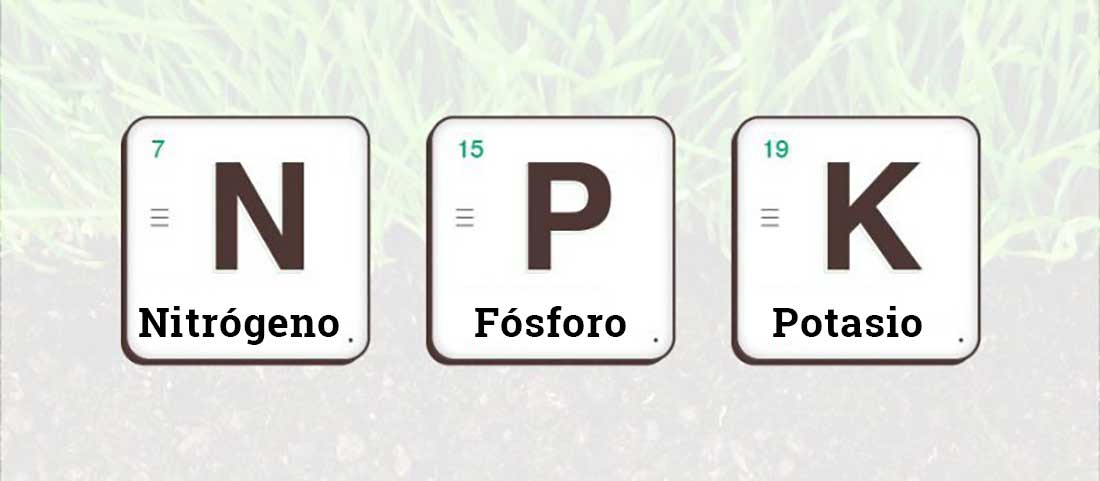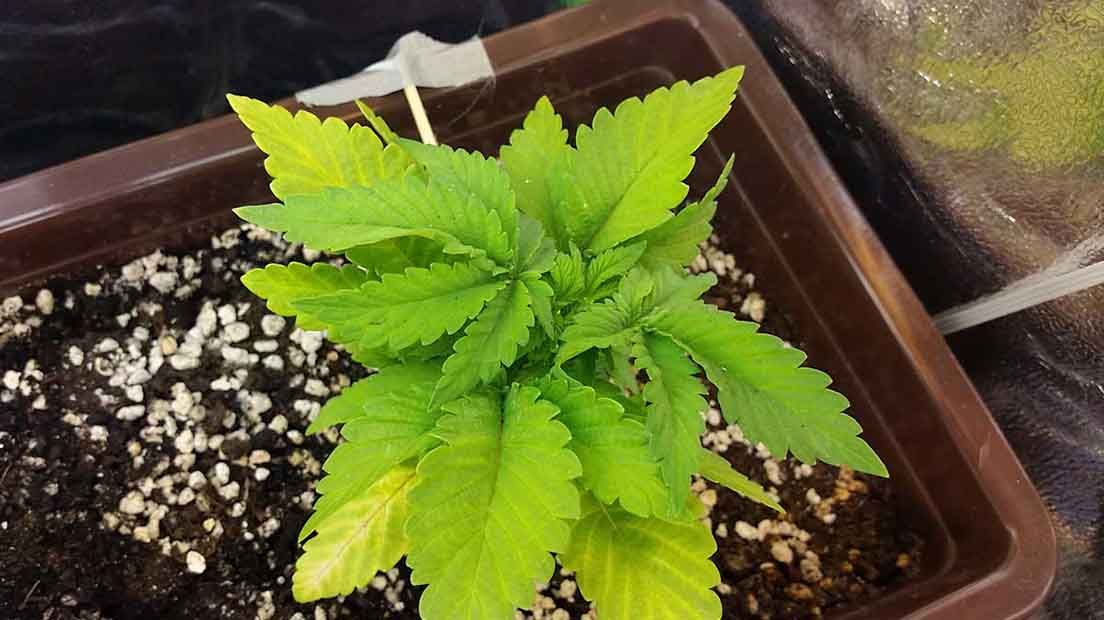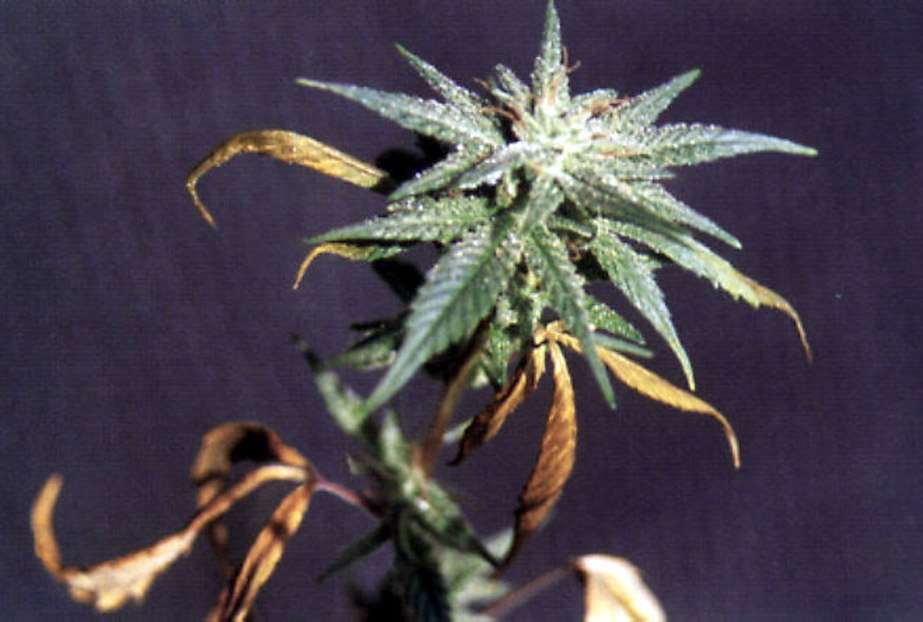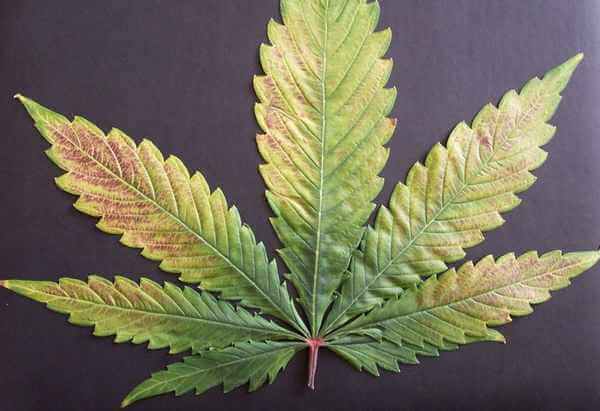NPK: basic elements of marijuana feeding
How does NPK affect your plants?
Marijuana plants do not require too much care to grow. However, if you have to make an effort to plant, water and take care of them, the ideal is to provide them with the optimal conditions for the best possible production both in quantity and quality. This will be only achieved with an deep NPK understanding, here you will find how to master the basic nutrients for marijuana plants.

In order to provide Cannabis plants with the necessary elements in the right quantities, it is essential to understand them. In this article we are going to focus on the three basic elements of Cannabis nutrition: nitrogen (N), phosphorus (P) and potassium (K), better known as NPK.
We have a monograph article on each of these basic elements, where we discuss the problems that can arise from excess or deficiency of each of these elements.

Just like people, plants need food to develop properly in their various stages. Just as we consume fats, proteins and carbohydrates, plants require nitrogen, phosphorus and potassium (NPK). These three are the so-called primary macro elements of marijuana. Then there are what are called secondary macro elements (such as calcium, magnesium and sulphur) and finally the micro nutrients, also called trace elements, such as boron, zinc, chlorine, molybdenum, copper, iron, cobalt or manganese, which we will discuss in another article. These help the plant to be healthy in order to absorb the macro elements.
Macro elements, in the right measure, enhance the development of certain aspects of the plant and directly affect its growth. But if they receive too many nutrients, the effects are counterproductive. Remember that a deficiency is easily remedied by adding the missing nutrient, but an excess is more difficult to correct, no matter how much you wash the soil.
What is nitrogen and how do I know if it is lacking or surplus?
Nitrogen (N) is mainly used for the development of tails and leaves. This element is present in proteins, amino acids, chlorophyll and much more. Thanks to nitrogen, the plant produces proteins, which in turn determine the growth of the leaves and the strength of the stems.
It is important to know that there are several types of nitrogen and they have different effects. Soluble nitrogen is absorbed the fastest (e.g. nitrate) and insoluble nitrogen is absorbed more slowly because it must first be processed by microbes in the soil (e.g. urea). Ammonium is better not to use as it directly interferes with the uptake of other nutrients.
If the plant does not have enough nitrogen you will notice that the older leaves (the big ones at the bottom) will start to turn yellow until the whole plant is a faded green colour. This is because the plant has not been able to produce enough chlorophyll. If the lack of nitrogen continues, the leaves and even some stems will turn purple, and then the leaves will start to wilt from the tips. As a result, the plants will not grow or produce much.
On the contrary, if there is too much nitrogen, the plant will become lush and dark green. This, far from being positive, indicates that the leaves and branches have grown too much in proportion to the roots. As a result they will be too spindly, weak, brittle and susceptible to attack by pests such as spider mites, and they will have too few flowers.
What is Phosphorus and how does its deficiency or excess affect plants?
Phosphorus (P) is essential for strong root development. It also affects photosynthesis, proteins and essential acids. It directly affects the distribution of energy throughout the plant, the genetic information of DNA and RNA and is also noticeable in the resin of the flowers and seeds.
If a marijuana plant receives too little phosphorus, it will stagnate in growth, both in height and branching. The first signs are seen in the small leaves, which start to turn purple. Then the veins turn reddish and the tips of the leaves blacken and curl downwards until the leaf dies. Please note that soils with a high pH hinder the absorption of phosphorus.
If the plant has too much phosphorus, it will be difficult to notice it in time, as this excess prevents the absorption of other nutrients, and it will take you a long time to know if it is lacking iron or another component, or if it has too much phosphorus. Remember that it is better to have too little than too much.
What is potassium and what happens if there is little or too much?
Potassium (K) is mainly used to boost flowering, although it has other functions such as accumulating carbohydrates, which together with starches will directly influence the plant’s production, or activating the enzymes involved in photosynthesis. It also promotes protein production, photosynthesis and cell respiration by regulating water in the plant.
For this reason, when there is a potassium deficiency, the plant will have problems regulating its temperature and the leaves will burn. You will notice this after about a week, when the lower leaves start to show rust-coloured spots mainly on the tips and edges. Then they will turn all yellow and as they die back they will turn grey and the tips will curl upwards. Since potassium also strengthens plants against cold, drought and disease, a lack of this element will weaken them considerably.
As with phosphorus, too much potassium will reduce the uptake of other nutrients, such as magnesium or manganese, and it will be quite difficult to detect what the problem is. However, it is quite rare to find cases of excess potassium.
In the following graph you can see how NPK imbalances affect your plants.

As you can see, each element is directly related to a different stage of plant growth. For this reason, we are going to alternate the proportions of one or the other in the different stages of marijuana cultivation. Below you will find the general indications for each stage, but it is not a perfect and infallible formula, as many other factors (micro elements, substrate, Ph, light, etc.) intervene, in addition to NPK. Remember, there is not just one way of doing things right, and far from trying to tell you how to do things, we are only trying to offer the right information to you.
NPK in the growth phase
At this time the plant needs to develop, to generate a tail, new branches and leaves that allow it to capture light. That is why we are going to give it a nitrogen boost in this vegetative stage. In the NPK of this phase, Nitrogen (N) should be the predominant element, Phosphorus will have the lowest value and the amount of potassium will be intermediate, to encourage the strengthening of the roots. Some normal NPK ratios for this phase are 5-2-4 or 15-8-10. Look at the ratios, not the numbers themselves, as some manufacturers use higher or lower figures, depending on the system they use to measure.
NPK in the flowering phase
Since N inhibits the growth of buds, we will decrease it significantly at this stage. Many growers directly cancel it out (N=0), so that in the end there will only be branches and buds with hardly any leaves, although others prefer to continue giving a little N so that the leaves do not yellow. In the NPK for flowering, Phosphorus (P) should have the highest value, although there should also be an acceptable amount of K, which has an effect on the taste and facilitates the canalization of P. When the plant is in full bloom, it should be given an NPK of 5-10-5 or 10-20-10.
NPK in the final stage of flowering
In this last stage, Potassium (K) is essential to boost the buds. You should also include a high dose of phosphorus, close to that of potassium, which will have the highest value of the three elements. In contrast, the amount of nitrogen is minimal in the final NPK, or may even be zero. For this last phase, you should supply your plants with a fertiliser that is very rich in P and K, even up to an NPK of 0-13-14 or 0-25-32. But remember that for the last two weeks the only thing you should give your marijuana is water, and no nutrients so that the soil is well washed and there are no chemical traces that affect the flavour and quality of the buds.
NPK fertiliser
To provide your marijuana plant with the necessary nutrients and the right balance of NPK, it is possible to choose between getting the elements separately and administering them yourself, or buying NPK fertilizers that come ready-made for each stage of cultivation with the right proportions.
If you are already an experienced grower, the best option may be Canna nutrients, which is one of the few brands that offers separate nitrogen, phosphorus and potassium fertilizers. By mixing the NPK and other elements yourself, you can adjust the doses of each according to the specific needs of the plant.
If you are a beginner or don’t have much time to devote to your cannabis cultivation, then try complete products that come with ready-made NPK doses for the growth and bloom stages, for example the Bio Bizz nutrients.
Recommended fertiliser brands
Among the many manufacturers of fertilizers in Experiencia Natural we trust B.A.C., BioBizz, Canna, Advanced Nutrients, Hy Pro and many others.
To continue viewing articles related to Cannabis growing tips visit our section dedicated to marijuana growing.
Founder of Experiencia Natural, creative and entrepreneur, designer, master in grower and marketing. For a standardization of all plants and substances giving priority to patients and users.














